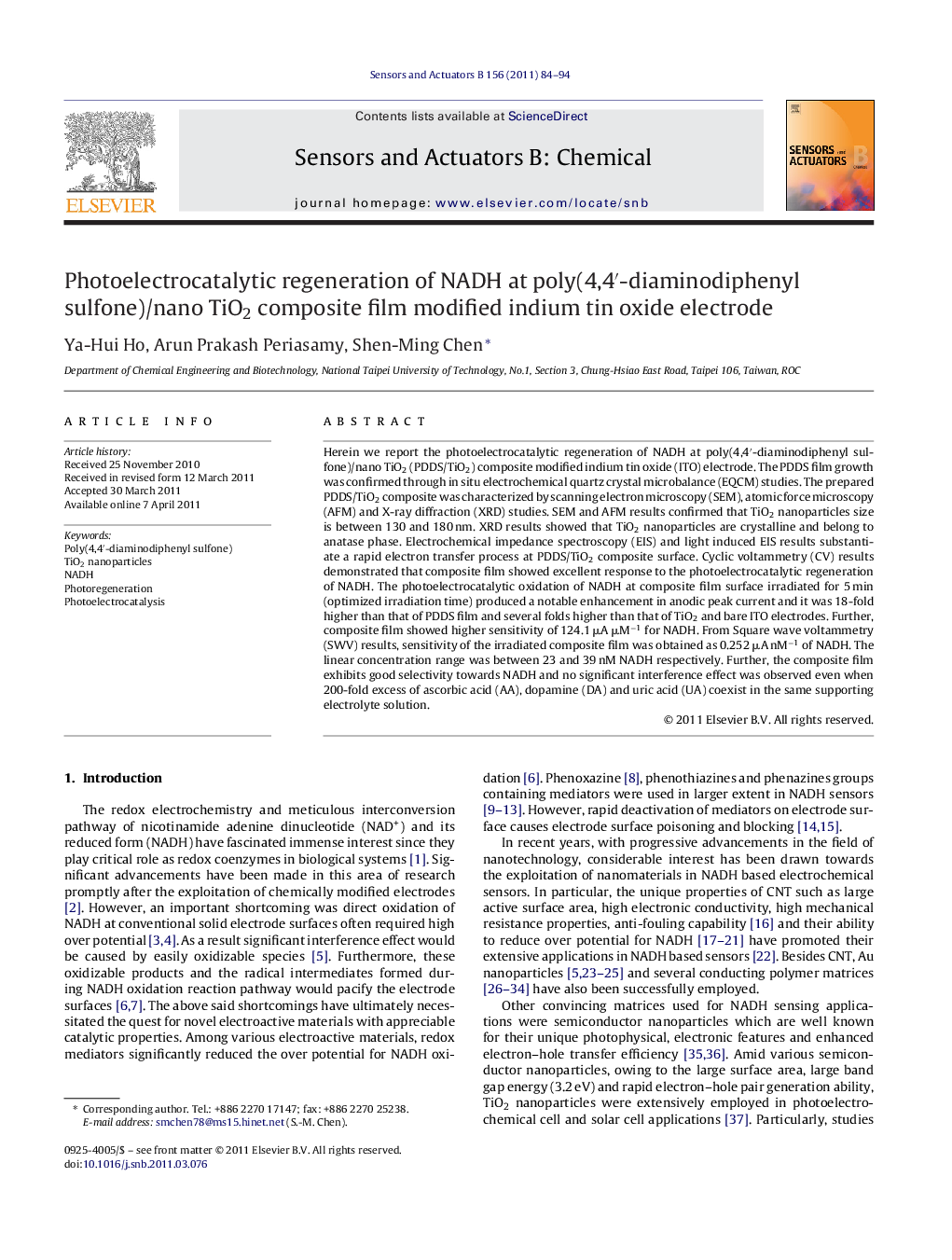| کد مقاله | کد نشریه | سال انتشار | مقاله انگلیسی | نسخه تمام متن |
|---|---|---|---|---|
| 740805 | 894191 | 2011 | 11 صفحه PDF | دانلود رایگان |

Herein we report the photoelectrocatalytic regeneration of NADH at poly(4,4′-diaminodiphenyl sulfone)/nano TiO2 (PDDS/TiO2) composite modified indium tin oxide (ITO) electrode. The PDDS film growth was confirmed through in situ electrochemical quartz crystal microbalance (EQCM) studies. The prepared PDDS/TiO2 composite was characterized by scanning electron microscopy (SEM), atomic force microscopy (AFM) and X-ray diffraction (XRD) studies. SEM and AFM results confirmed that TiO2 nanoparticles size is between 130 and 180 nm. XRD results showed that TiO2 nanoparticles are crystalline and belong to anatase phase. Electrochemical impedance spectroscopy (EIS) and light induced EIS results substantiate a rapid electron transfer process at PDDS/TiO2 composite surface. Cyclic voltammetry (CV) results demonstrated that composite film showed excellent response to the photoelectrocatalytic regeneration of NADH. The photoelectrocatalytic oxidation of NADH at composite film surface irradiated for 5 min (optimized irradiation time) produced a notable enhancement in anodic peak current and it was 18-fold higher than that of PDDS film and several folds higher than that of TiO2 and bare ITO electrodes. Further, composite film showed higher sensitivity of 124.1 μA μM−1 for NADH. From Square wave voltammetry (SWV) results, sensitivity of the irradiated composite film was obtained as 0.252 μA nM−1 of NADH. The linear concentration range was between 23 and 39 nM NADH respectively. Further, the composite film exhibits good selectivity towards NADH and no significant interference effect was observed even when 200-fold excess of ascorbic acid (AA), dopamine (DA) and uric acid (UA) coexist in the same supporting electrolyte solution.
Figure optionsDownload as PowerPoint slide
Journal: Sensors and Actuators B: Chemical - Volume 156, Issue 1, 10 August 2011, Pages 84–94